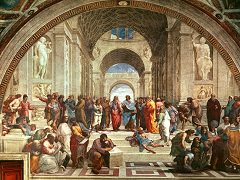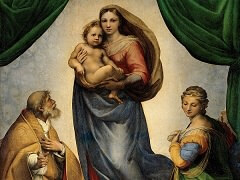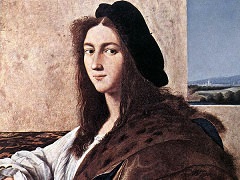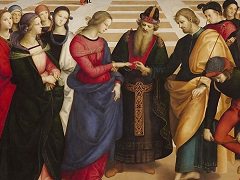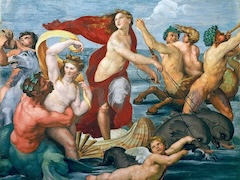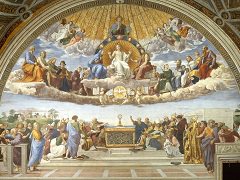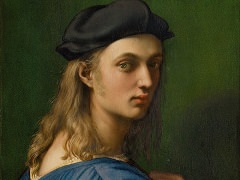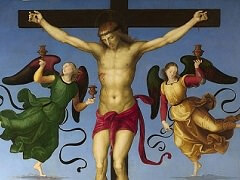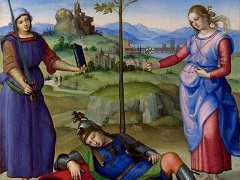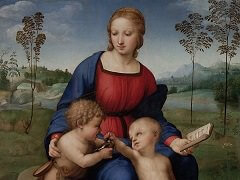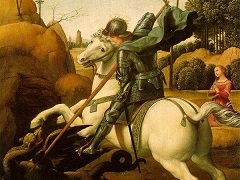The Deposition, 1507 - by Raphael
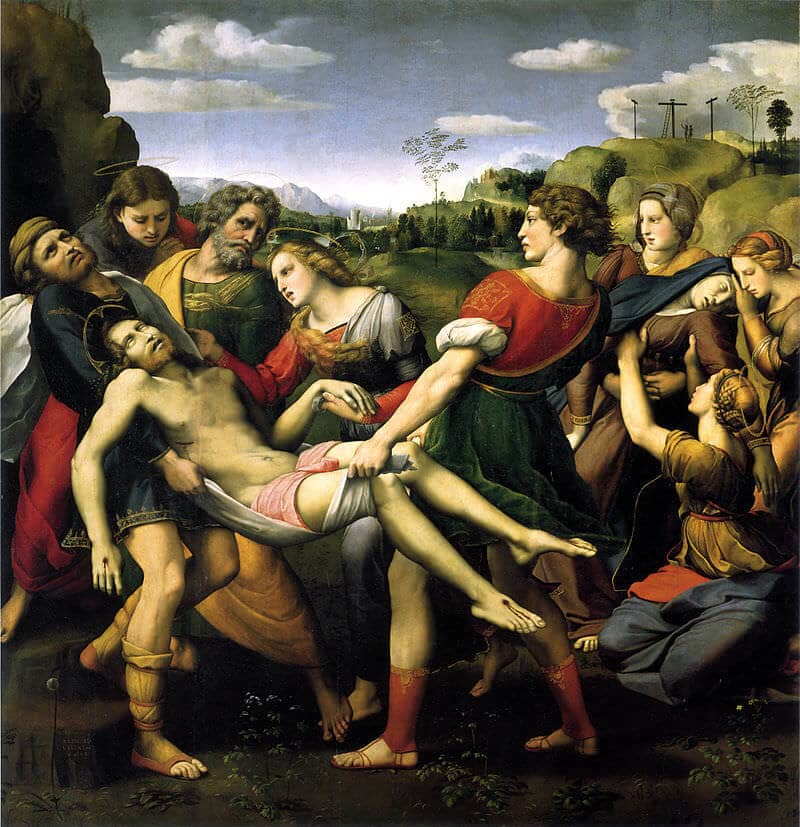
More than a dozen studies have survived for The Deposition, making it the most amply documented of Raphael's paintings and permitting some real insights into the development of Raphael's ideas as he studied a given problem. A signed and dated work, it was destined for the Church of S. Francesco al Prato in Perugia and was, according to the best available evidence, commissioned by Atalanta Baglioni a few years after her son, the young Grifonetto Baglioni, murdered his relations in order to gain control of the government of Perugia - only to be killed himself a few days later. The painting thus represents and celebrates the pain of the bereaved mother. There are two principal and distinct motives within the picture, one being the suffering Mary swooning at the right, an apparent reference to Atalanta Baglioni, with probably a corollary reference to Mary as coredeemer with Christ as she echoes his Passion. The other motive represents the transport of Christ's body to the tomb, which is shown on the extreme left.
The entombment of Christ is a very popular subject matter during Renaissance time. Other than Raphael, Caravaggio, Titian and Michelangelo had paintings related to the same topic. Among the figurative components which Raphael drew from his Florentine experience, those which derive from Michelangelo seem most prevalent in his last Florentine works. The work in which Michelangelo's importance to Raphael becomes most evident is The Deposition.

